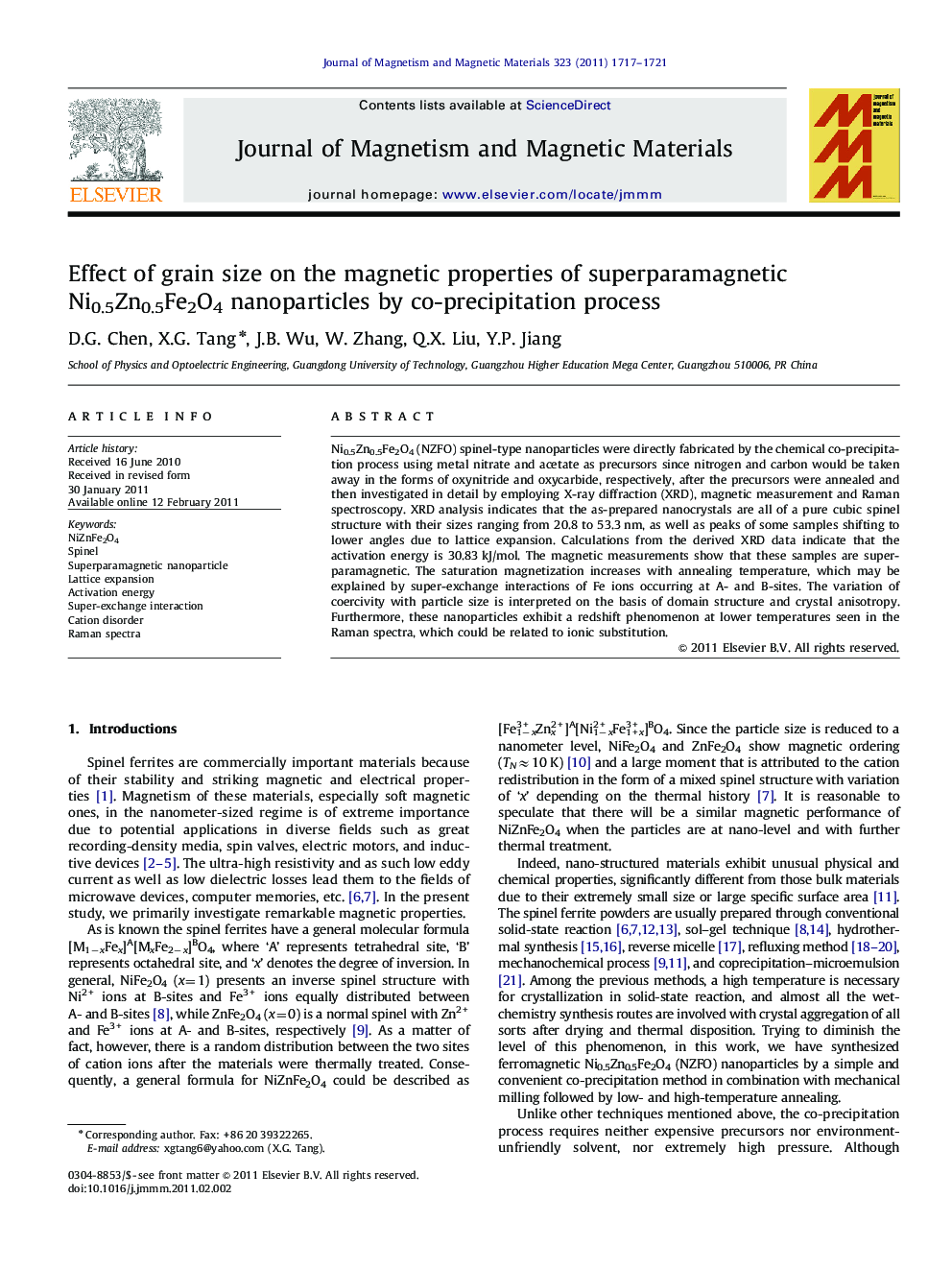| Article ID | Journal | Published Year | Pages | File Type |
|---|---|---|---|---|
| 1801162 | Journal of Magnetism and Magnetic Materials | 2011 | 5 Pages |
Ni0.5Zn0.5Fe2O4 (NZFO) spinel-type nanoparticles were directly fabricated by the chemical co-precipitation process using metal nitrate and acetate as precursors since nitrogen and carbon would be taken away in the forms of oxynitride and oxycarbide, respectively, after the precursors were annealed and then investigated in detail by employing X-ray diffraction (XRD), magnetic measurement and Raman spectroscopy. XRD analysis indicates that the as-prepared nanocrystals are all of a pure cubic spinel structure with their sizes ranging from 20.8 to 53.3 nm, as well as peaks of some samples shifting to lower angles due to lattice expansion. Calculations from the derived XRD data indicate that the activation energy is 30.83 kJ/mol. The magnetic measurements show that these samples are superparamagnetic. The saturation magnetization increases with annealing temperature, which may be explained by super-exchange interactions of Fe ions occurring at A- and B-sites. The variation of coercivity with particle size is interpreted on the basis of domain structure and crystal anisotropy. Furthermore, these nanoparticles exhibit a redshift phenomenon at lower temperatures seen in the Raman spectra, which could be related to ionic substitution.
Research highlights► Ni0.5Zn0.5Fe2O4 (NZFO) spinel-type nanoparticles were directly fabricated by the chemical co-precipitation process using metal nitrate and acetate as precursors. ► Magnetic measurements show that these samples are superparamagnetic. ► Furthermore, these nanoparticles exhibit a redshift phenomenon at lower temperatures seen in the Raman spectra, which could be related to ionic substitution.
